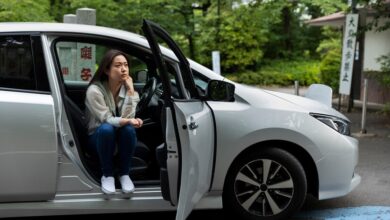Unraveling the Enigma 76-a01859-0at1ac-b

The emergence of humanoid robots stands as one of the most promising and enigmatic improvements within the subject of technology. Once confined to the pages of sci-fi novels and the frames of silver display epics, humanoids have stepped off the pedestals of our creativeness, evolving right into a near-tangible truth poised to reshape our workspaces, houses, and societies.
In this giant exploration, we can dig deep into the burgeoning phenomenon of humanoid robotics—unveiling their cutting-edge capabilities, envisioning their future, and speculating at the effect they could wield—as we stand getting ready to a brand new epoch in human-robot coexistence.
Prologue: The Humanoid Chronicles
Humanoids are no longer just merchandise of the storyteller’s imagination but are assuming roles in healthcare, entertainment, and even as companions. They bridge the space between traditional robotics and human interaction, with many fashions now offering the potential to understand, react to, and even mirror human emotions. The upward thrust of those mechanized ‘Pepper’ personalities, among others, opens a brand new chapter in our dating with technology.
This bankruptcy is not with out its percentage of controversy and situation. Questions of ethics, privacy, and the mental intricacies surrounding our overtures to these excessive-tech homunculi are starting to emerge. The narrative of human-robotic interaction is unfolding earlier than us, and as with any paradigm shift, it brings each exhilaration and apprehension. It is in this era of uncertainty that we pen the chronicle of humanoid robotics.
Chapter 1: The Rise of the Humanoid
What defines a humanoid robotic, and why is their improvement one of these good sized milestone inside the narrative of robotics? Chapter 1 serves as a foundational exploration of the traits of humanoids, their technical complexities, and the breakthroughs which have propelled them into the mainstream.
From the pioneering paintings of researchers like Hiroshi Ishiguro and the HCRL (Human Centered Robotics Lab), we are able to discuss how humanoids have outgrown their mere imitative mold to grow to be systems for the examine of human behaviors and psychological responses. We shall additionally peek into the environment of builders, producers, and visionaries who’re shaping the era that underpins the ultra-modern technology of these anthropomorphic automatons.
Chapter 2: The Anatomy of AI
Humanoids are more than just mechanical marvels; at their core, they’re AI-pushed machines. In this chapter, we dissect the AI systems that empower humanoids to feel, interpret, and reply to their surroundings. Neuro-stimulated algorithms, deep getting to know models, and complicated sensor arrays all play a element in equipping those robots with competencies that we ought to once only characteristic to residing beings.
We will talk the symbiotic relationship among AI and robotics, examining how advances in one area catalyze development inside the other. Furthermore, we will speculate on the trajectories of AI generation and how those evolutions could have an effect on the abilties of destiny humanoid robots.
Chapter three: Beyond the Operating Table: Humanoids as Healthcare Companions
One of the maximum noble applications of humanoid robots is in healthcare. From assisting in bodily remedy to supplying companionship to the elderly, humanoids have already began to revolutionize the manner we technique healthcare. In Chapter three, we explore real-world case research that exhibit the impact of humanoid partners on sufferers and healthcare companies alike.
We can even contact on the ability moral issues in integrating robots into the healthcare area. While the blessings are clean, there are complex questions surrounding the delegation of caregiving to non-human entities.
Chapter 4: The Workforce of Tomorrow
Humanoids are slated to come to be useful property within the administrative center. In Chapter 4, we talk how those robots are positioned to convert industries inclusive of production, logistics, or even customer support. With their potential to work alongside human beings, acting tasks that are both risky and monotonous, humanoids promise to decorate performance and protection.
However, the integration of humanoids into the personnel additionally increases pertinent questions about activity displacement and the transforming of labor structures to deal with these new group participants. We’ll explore these troubles and take a look at the societal implications as we teeter on the precipice of an automatic labor revolution.
Chapter 5: The Home Front
Imagine a destiny where humanoids are as commonplace in houses as smartphones are nowadays. Chapter five envisions this truth, discussing the capability roles of robots as home assistants, protection guards, and, perhaps maximum intriguingly, as partners for individuals across one of a kind age companies. The integration of humanoids into our domestic lives guarantees comfort, protection, and a singular slant on domestic automation.
We may even cope with the privateness worries related to deploying humanoids in non-public spaces. How are we able to ensure that these robots, with their unparalleled get entry to to our lives, admire the sanctity of our homes?
Chapter 6: The Human-Robot Social Contract
In this bankruptcy, we deal with the underlying philosophy of human-robot interactions. What type of dating will we as a society want to establish with these beings? The ‘Social Contract’ offers a theoretical framework for the symbiotic relationship among people and robots and gives insights into the rights and responsibilities on each facets.
This segment dives into the rising subject of robotic ethics and the necessity of growing a hard and fast of recommendations to control human-robot interactions, specifically as those interactions emerge as an increasing number of intimate and personal. Here, we deliberate on the moral issues surrounding robots and introduce the concept of robotic rights, a website on the way to require sensitive stability and foresight.
Chapter 7: The Receding Boundaries
The line among people and machines is turning into more malleable, elevating profound questions on what it means to be ‘human.’ Chapter 7 examines the intersection of robotics, AI, and humanity, as we talk the capability for augmentation and cyborgization. What does the future maintain for those who pick out to decorate their skills by means of integrating with robotic technology?
We also ponder the implications for identity, society, or even our species as humans retain to reinforce themselves and transgress the traditional boundaries of organic life.
Chapter 8: The Learning Machines
‘Social Intelligence’ is the term often used to describe the capability of humanoids to recognize and react to human social cues. In Chapter eight, we discover the academic components of robot social mastering. We dig into the challenges of coaching robots to have interaction in sophisticated social interactions and speak the techniques and technologies being employed to imbue those machines with human-like social talents.
We additionally touch at the capacity for robot studying to be a -way road, with robots no longer handiest mastering from people however also teaching and guiding us in factors in which they excel.
Chapter 9: The Fabric of Society
Humanoid robots are set to have a far-accomplishing impact on society, and their integration will necessitate a reconceptualization of the societal material. This component grapples with the ability for humanoids to foster inclusivity through supporting companies that could otherwise be marginalized, providing new pathways for social engagement and employment.
Simultaneously, we don’t forget the opportunities for alienation and social upheaval, as human interaction becomes increasingly mediated by way of machines that, whilst empathetic, can in no way simply apprehend the human revel in.
Chapter 10: The Horizon of Humanoids
In the final chapter, we cast our gaze to the horizon, envisioning a destiny in which humanoid robots are ubiquitous. What roles will they play in our lives, and how will their presence shape the human revel in?
We additionally speak the want for regulatory frameworks that can adapt to the rapid evolution of humanoid technology, making sure that the advantages of those robots are maximized at the same time as mitigating capability risks.
Humanoid robotics stands on the confluence of technological possibility and human success. It is a testament to our ingenuity, our insatiable interest, and our inexorable power to push the limits of what we understand as the viable. The story of humanoids remains being written, and as we immerse ourselves in their saga, we remain each witnesses and architects of a new and exceptional chapter inside the records of robotics.




